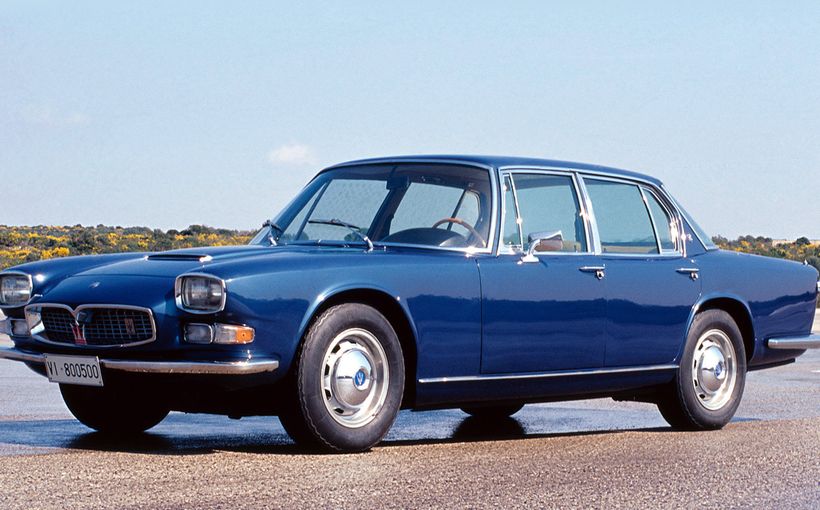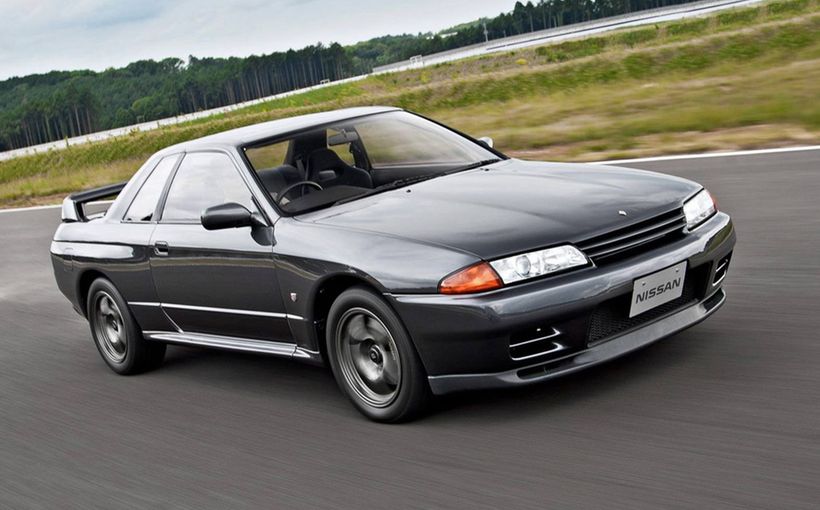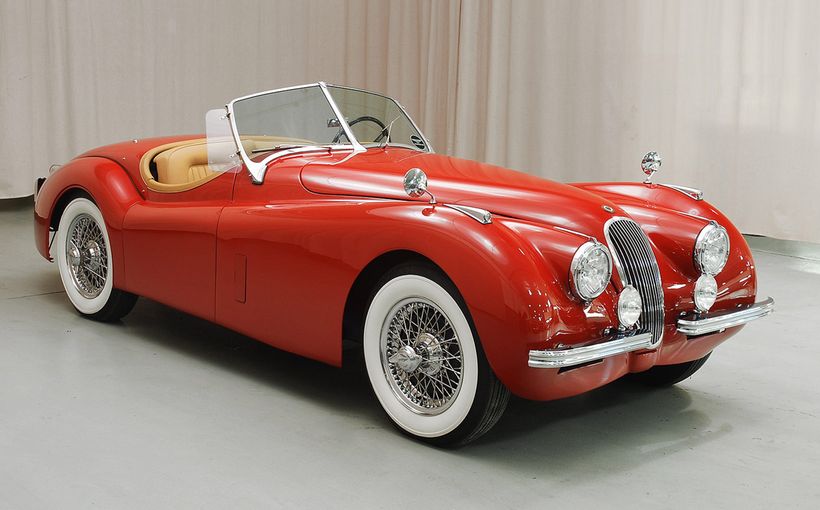
The story goes that Edsel Ford II (son of Henry Ford II and grandson of Henry Ford), on secondment to Ford Australia, said that the company spent millions of dollars on the XE Falcon's rear suspension just to please one man. That lucky man was Peter Robinson, who by March 1982 had been editor of Wheels magazine for more than 11 years.
The XE was much more than just an extensive facelift. The most significant of the many mechanical changes was the switch from semi-elliptic (leaf) springs at the rear to a six-link Watts Linkage coil sprung arrangement. Engineer David Ford (no relation) believed that this was the best type of rear suspension for the Falcon, short of the kind of complex fully independent system that was fitted - but never properly promoted by the marketing team - to up-spec AUs sixteen and a half years down the road!
Edsel Ford's point was exaggerated but contains the proverbial grain of truth. When the XE was introduced, 58 per cent of all Falcons were fitted with tow bars and perhaps 80 per cent were sold into fleets. Now, in 1982 the novated lease where the user chooses his nor her car was still on the wish list. Hard-headed fleet buyers could not have cared less whether the cars they were buying at the lowest possible price for their reps had cart springs or the state of the art IRS. They weren't interested in bells or whistles. They wanted cheap cars that would achieve good resale value and cost as little as possible over the whole ownership experience.
Peter Robinson and the overwhelming majority of his motoring journo colleagues brought utterly different criteria to judging cars, and it should be pointed out that mistakes were often made because these cars were being judged brand new and not after a few years of hard use. The Wheels Car of the Year for 1982 was not the XE Falcon but the original, gutless, appallingly built and unreliable Holden Camira. I imagine Edsel would have laughed at that some years later as the Camira's reputation disintegrated - along with the car!
But Robbo was not alone in lambasting the leaf-sprung rear end of the XD Falcon and numerous other of its attributes - including poor turning circle, steering wheel too close to the driver, and a lack of feel in the manual steering. Most comparisons in the media between the Holden Commodore and the XD gave victory to the Euro-Holden (but perhaps they were wrong!).
For 1979 the magazine awarded its precious gong to no manufacturer. Ford Australia's response was brilliant. The company took out full-page colour advertisements depicting no fewer than 31 lemons, each of which had a car name printed on it. Most prominent, naturally was ‘Ford Falcon XD' but others included ‘Chrysler Sigma', ‘BMW 323i' and ‘Jaguar 4.2 Series III': point beautifully made!
Doubtless the XD's failure to collect the industry's most treasured award, which was snared the previous year by the Commodore, galled Ford Australia executives. I understand they walked out of the presentation as a group in silent but obvious protest.
It's difficult to know the extent to which media criticism, spearheaded by Peter Robinson, drove the huge upgrade which turned the XD into the XE, but like most other automotive manufacturers Ford Australia was highly sensitive to criticism of its products. This is the context for Edsel Ford's observation.
Good on you, Robbo, those fleet reps and private customers would have said had they known the role outspoken criticism probably caused in making the 1982 Falcon so much better to drive than its predecessor. The success of the new XE was the major factor in gifting Ford Australia market leadership for the first time.
The XE is best understood as the culmination of the engineering and marketing leadership initiated by Bill Bourke back in 1965 (While the XD had been brilliantly marketed, especially from the advent of the Alloy Head version in 1980, but the XE incorporated the needed extra engineering finesse to put the struggling Commodore right into the doldrums. Going Ford was the Going Thing in a new decade! Backing the XE were the Laser and Telstar, both of which were superior to their Holden rivals.

And how did Peter Robinson and the Wheels team judge the XE? The April 1982 edition with a red Fairmont Ghia ESP on the cover - red cars brought more sales and a red Falcon or Holden brought the most of all - screamed: ‘Falcon the Fantastic! How Ford turned it into a proper car.' The accompanying story was full of praise for the way the $27 million had been spent. Alas for Edsel and his mates, the four-car Falcon versus Commodore comparison in the June issue took a different approach, giving the Holden an easy victory.
At the time I was the features editor at rival MOTOR. I, too, wrote a Falcon versus Commodore test. We had a VH Commodore SL/X with the 4.2-litre V8 and manual transmission and a Ghia ESP 4.1 manual. Our cover was the most memorable we did that year. I think this was the first comparison that had the XE as the winner. That's why we went with the word - repeated in smaller script down the cover of the June 1982 edition until it vanished - SURPRISE.

My concluding three paragraphs read:
So there you are. The Commodore is still a very efficient car and with the 4.2-litre engine provides excellent performance and reasonable fuel economy. Its handling and ride are outstanding under favourable conditions but deteriorate markedly over rough roads. It is not a car to push hard in the wet weather.
The Fairmont Ghia ESP is a remarkably satisfying car. It is more stable than the Commodore although it offers less power. We kept wishing for that 5.8-litre engine which would have given this latest sporty Ford some real hurry-up. A 5.8-litre ESP versus a 5.0-litre Commodore would, we feel, be no battle. The Ford every time. And yes, we are surprised to find ourselves saying so.
Between these two cars the choice is harder. But it is still the Ford. Compared with the Commodore it is short of power but it is a more surefooted and relaxing cruiser. If we did all our driving round town we would choose the Commodore but to drive to Cape York it would be the Falcon, thank you very much.
After so many years I feel I can say what I really think about the Holden versus Falcon wars. There was a general unconscious media bias towards Holden, at least in part because the Holden executives were more open, friendlier and not condescending. I won't name them, but I can count at least five Ford Oz executives of the 1979-2000 era who were (sometimes appallingly) patronising towards motoring journalists. And its public relations office was not the equal of Holden's. One example: Holden recruited that brilliant motoring journalist Evan Green to head its PR department just before the launch of the Commodore.

It is perhaps the case that the topline ESP variant with its Scheel seats, Bilsteins, lower ride height, wider rims and better rubber (225/60s being seriously wide for the day!) had an unfair edge over the Commodore SL/X but there is no doubt in my mind that the conclusions we shared on that test were accurate. (The late) Brian Woodward, the editor who drove with me throughout our 1,000-kilometre test route, wrote:
As a route, the surfaces and conditions vary from urban main roads to freeways, fast country roads, dirt roads, goat tracks, fast gravel roads, tight and twisty roads covered with small red volcanic pebbles where sideways is a way of life and one section of sand road running between stately trees lining the banks of the Wadbilliga.
We think the route covers almost every type of road that a driver is ever likely to encounter in the length and breadth of Australia without travelling more than 5,000 kilometres. The test route is about 1,000 kilometres. A good test of a car, or in this case, two cars.
There is no doubt the Commodore has been the Road Tester's favourite for many years. We firmly believe this is because Road Testers easily fall into the habit of using roads they like, not roads they don't like. The Falcon shone like a beacon when the going got tough.
As a nation we are susceptible to false images. Marlboro brings the horses down from the high country and a million Aussie males reach for a cigarette in front of their suburban TV sets. In Ford's case the Marlboro image isn't fantasy, just that we believe no one has actively stacked it up against the Commodore on any terms other than those where the Commodore excels.
And that's the crux of this test. What the Commodore does well it does brilliantly. What the Ford does well it does better than the Commodore.
You know, I can still remember pushing those cars so hard on greasy or loose surfaces. The Commodore felt narrow and skittish; the Ford felt wide and planted. Again, the Falcon recipe established with the XR is evident in the XE. While the XD's leaf springs let it down, the XE capitalised on its footprint with the thoroughly engineered Watts Link configuration.

In the early 1980s Doug Mulray was the star of popular radio, hosting 2MMM's breakfast show. I think it was Mulray who said over the airwaves: ‘If Falcon is the answer, it must have been a pretty stupid question.' In the November 2016 Falcon special edition of Wheels, Phil Scott, who succeeded Peter Robinson as editor in 1987, writes:
For much of its life it [the Falcon] was all things to all people. Company car, family car, racecar and lusty hoonmobile. This is remarkable, and unique in the true sense of that word. Falcon Is The Answer, the slogan said. The question didn't matter.
Looking back on 56 years of Falcons, to me the XE represents one of the highest points. Tested on the right roads - meaning Australia's remarkable diversity of surfaces because many can hardly be called roads - that red Fairmont Ghia ESP was a 1982 standout, beautifully balanced in a way that eluded all its successors until the AUs equipped with that complex, expensive and heavy multi-link independent rear suspension. (I owned several AUs and they were all excellent, perhaps especially my Fairmont Ghia V8 with sports suspension and bodykit.) I think of that ESP as the Great Australian Road Car re-imagined for the 1980s: successor to the XB, predecessor of the best AUs.
What was so good about the Watts Link? It had six links to the Commodore's five. The upper arms prevented the axle from twisting under torque, while the lower arms stopped the axle from trying to steer the car. The system also stopped the axle from stepping sideways.
Progressive triple-rate springs were another upgrade. These were even plastic-coated in the interest of reducing the dreaded NVH (Noise, Vibration and Harshness: a term coined by Ford of Britain during the development of the original Cortina and which soon passed into everyday use throughout the industry). The bump stops were now made of foam and there were new rubber suspension bushes. Falcon wagons and wagons persisted with the semi-elliptic springs (which Ford loved to refer to by a very old name, Hotchkiss System), which the engineers insisted were (are) better for load-carrying.

These suspension changes alone would have stood the Falcon in good stead for another couple of years, but there was more. The six-cylinder engines were equipped with dual-throat Webers. And during the life of XE Australia's first electronic fuel-injection (sourced from Bosch) would be added to the venerable 4.1. The only problem here was that the 4.1 EFI was supposed to replace the 4.9-litre and 5.8-litre V8s. Fat chance!
Nevertheless, Ford Australia's plumbing of an advanced Bosch L-Jetronic fuel-injection system on to the venerable Falcon six represented a major advance for the Falcon and, once again, Ford had beaten Holden with new technology. The XE EFI engine bay was beautifully presented with the alloy head as centrepiece, meaning buyers could see where their money had been spent; by contrast, when the 1984 VK Commodore got EFI, the car went superbly but didn't that engine bay look crook? Ford Australia's marketing smarts in evidence yet again. Pity the PR didn't match!
Those final V8s (until the EB in 1991) got a Carter four-barrel carburettor. But the final Australian V8s were built before the end of the XE's launch year. This was a seriously wrong decision. By dropping V8 engines, Ford Australia abandoned the petrolhead market - a whole generation, or more to Holden. There was the Commodore V8 and the Statesman/Caprice V8: job done! The withdrawal from motorsport merely confirmed what quickly proved to be a disastrous misjudgement. Loyalty from young petrolheads was directly connected with V8 engines and racetrack success. The whole Dick Johnson and the rock episode is unimaginable with an EFI sixpack! By the time the wide-track (although still not as wide as a Falcon's!) VN hit the streets, this time bomb was ready to explode.
A five-speed manual transmission was offered with the entry level 3.3-litre six. But, sadly, power steering wasn't standard on the cheaper Falcons. The steering wheel itself was moved further from the driver. But the turning circle was still far too large and the manual steering was a disgrace with 5.2 turns lock to lock.

All the good points of the XE upgrade applied to the Fairlane and LTD. It was undoubtedly the finest LTD for its time that Ford Australia had ever produced or ever would produce. As well as that memorable 5.8-litre V8, the most expensive XE (actually coded FD) had special alloys with then highly regarded Michelin TRX tyres. Those tyres needed unique rims and when Michelin stopped making them, owners had big problems which usually resulted in having to change the wheels to get tyres that would fit. You still got leather trim if you wanted it and there was a moonroof. What a beauty!

In summary, an entry level Falcon GL was far from brilliant despite its excellent new rear suspension. But the more expensive variants were generally quite desirable, while the brilliantly specified Fairmont Ghia ESP - especially when powered by the 5.8-litre V8 - was the first dedicated Falcon sports sedan since the XC Fairmont GXL, and a much better car. The XE did a better job than any previous Falcon of putting Alfred P. Sloan, jr's famous edict into action: ‘a car for every purse and purpose'.

In braver times the Fairmont Ghia ESP 5.8 could easily have carried a GT badge. The LTD finally achieved the all-round excellence that was promised by its 1973 predecessor but not delivered. It remains, in my view, one of the finest cars the Australian automotive industry ever produced and I wish I had one.












